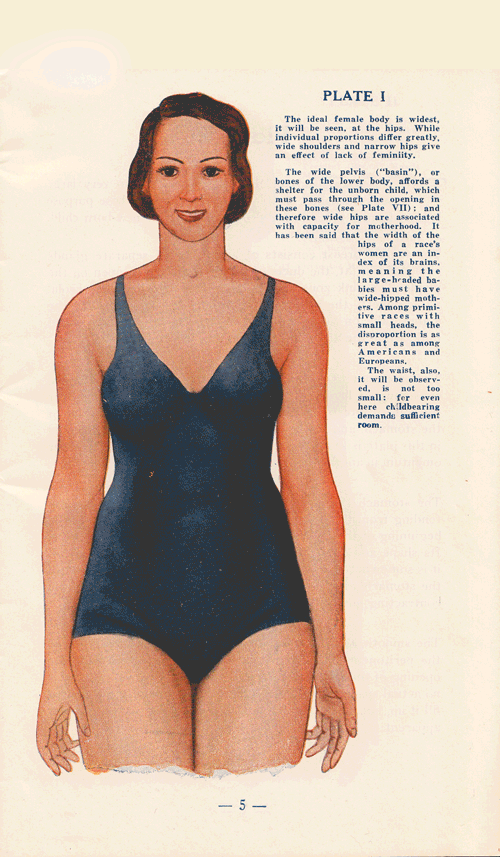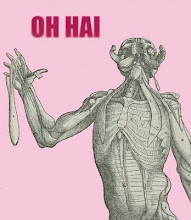Cute Enamel Pins For Every Medical Speciality
-
Cute Gastroenterology Pin Collection
We can smell an gastroenterology pin order a mile away when we're shipping
out pin orders -- for those of you who gr...
Friday, November 22, 2013
Tuesday, October 22, 2013
Monday, October 21, 2013
Saturday, October 12, 2013
Wednesday, October 2, 2013
Wednesday, September 25, 2013
Dr. Seuss's Naked Ladies
A recent Bust article shows great images and summarizes the story written and illustration by the Doc himself.
Monday, September 23, 2013
Lady Bone Models
Women objectifying themselves by making themselves part of the perceived aesthetics of a product. And that product might be a giant skull.
HERE
Even better is a woman staring at Rasputin's preserved cock-and-balls:
Thanks PR!
HERE
Even better is a woman staring at Rasputin's preserved cock-and-balls:
Wednesday, September 18, 2013
Tuesday, September 17, 2013
Monday, September 16, 2013
And more blood
On MENOTOXINS and how the ancient and early modern fears of menstruation revived in the 20th century.
And a semi-appropriate music video to go along with it:
And a semi-appropriate music video to go along with it:
Tuesday, September 10, 2013
Mourning Rings
Many of these have tiny skeletons in enamel and/or paper under glass. Brilliant!
For more see the Yale Art Gallery
For more see the Yale Art Gallery
Friday, July 5, 2013
Sketches of Historical Curiosities
Images copied from Peter Dittmar, "Kleines Kunstkammer Lexikon," Die Weltkunst 83:70, 2013, pp. 38-45
Wednesday, June 26, 2013
Sunday, June 9, 2013
Saturday, June 8, 2013
The Rijksmuseum, from Gross to Interesting
St. Roch is the patron saint of plague victims, and his plague sore is often seen being licked by a dog.
So Cambyses was a corrupt judge who was sentenced to be flayed due to his conduct. His son was his professional heir, so they hung his skin above his son's seat to assure that he would not become corrupt like his father.
Here is St. Thomas being all like, "no, really? Let me see... Oh my God that's gross... I mean, Holy Hell..." (all the while making a stink face.)
As you can read, SOMEONE MIGHT HAVE HID IN THIS BOX TO ESCAPE PRISON. Which is just badass.
Sweet automaton. And if you haven't had enough in terms of things that make drinking more fun, here you go:
There is a small die in the globe on the top (the actual bottom) of this cup. Whatever you roll, you have to drink.
It's like a flask, but for at home.
Creepy? I agree. And inaccurate, but the creepiness outweighs all science anyway.
"Geometria" with a great architectural updo
Man using a touchstone to determine metal quality
"unicorn" horns
Celestial globe
Wednesday, May 29, 2013
Embalming Historical Figures
From www.medievalrobots.org/:
Placing the bodies of particularly revered or heroic figures on display has a long history. In medieval historical writing (including historical chronicle and epic poems), heroic warriors from Troy and Carthage were embalmed (sometimes with magical fluids) and preserved for eternity. Hector, the prince of Troy, was placed in the open, where his subjects could see him. In one account, the embalming fluid went in at the top of his skull, and then flowed through his veins into his extremities.
According to many natural philosophers, a person could not be considered fully dead until decay or putrefaction occurred. So keeping Hector perfectly "fresh" actually meant keeping him partially alive. Kind of like Han Solo in carbonite, or Wesley in "The Princess Bride."
Sunday, May 19, 2013
Friday, May 17, 2013
Sisters Are Doing It For Themselves
'the body of a female masturbator might even create its own offspring, independent of human action. Physician G. A. Douglas argued in his book, The Nature and Causes of Impotence in Men, and Barrenness in Women (1758), that false conceptions could be caused by self-abuse. He suggested that women needed vaginal stimulation in order to make an egg descend. If a woman used “those shameful implements” to stimulate herself, she would produce an egg that would remain unfertilised and grow so that it resembled a pregnancy. Women, he warned, “should know this and tremble”.'
Once again from Wonders and Marvels
And for the song reference see Annie Lennox and Aretha Franklin singing Sisters Are Doing It For Themselves.
And a great version by some goth dudes
Once again from Wonders and Marvels
And for the song reference see Annie Lennox and Aretha Franklin singing Sisters Are Doing It For Themselves.
And a great version by some goth dudes
Thursday, May 16, 2013
The Smashing Pumpkins and Georges Méliès
For those who don't know, the Smashing Pumpkin's Tonight, Tonight video was based largely on the work of the early filmmaker Georges Méliès, after whom the ship carrying the music video's protagonists is named. Méliès' Voyage dans la Lune was the main inspiration:
La Sirène was another film that likely gave shape to the undersea scene
Méliès was made a fictional character in the recent book and movie Hugo. It also stars an automaton!
Monday, May 13, 2013
Man-midwives of the 18th century used "a wooden statue representing a woman with child, whose belly was of leather, in which a bladder, full perhaps, of small beer, represented the uterus. This bladder was stopped with a cork, to which was fastened a string of packthread to tap it, occasionally and demonstrate in a palpable manner the flowing of the red-coloured waters. In short, in the middle of the bladder was a wax doll, to which were given various positions."
From Elizabeth Nihell, A Treatise on the Art of Midwifery (London, A. Morley) 1760
Cited in Roberta McGrath, Seeing her Sex: Medical Archives and the Female Body
Sunday, May 12, 2013
Censoring Anne Frank's Revelations About Her Body
Out of respect, her father originally omitted certain sections of Anne's diary dealing with her discoveries as an adolescent woman. New versions of the diary reintegrate these into her text after it has become part of a literary canon--they no longer serve to infiltrate her memory as a girl, but to more fully expound on what she chose to write down, from the fear of being found to her first kiss and all of the life she led in-between, privately or with others. But this version has met with at least one opponent who doesn't want her daughter to read it and doesn't think it should be read in school.
Excerpts from The Guardian:
"There are little folds of skin all over the place, you can hardly find it. The little hole underneath is so terribly small that I simply can't imagine how a man can get in there, let alone how a whole baby can get out!"
"until I was 11 or 12, I didn't realise there was a second set of labia on the inside, since you couldn't see them. What's even funnier is that I thought urine came out of the clitoris....In the upper part, between the outer labia, there's a fold of skin that, on second thought, looks like a kind of blister. That's the clitoris."
"When you're standing up, all you see from the front is hair. Between your legs there are two soft, cushiony things, also covered with hair, which press together when you're standing, so you can't see what's inside."
Excerpts from The Guardian:
"There are little folds of skin all over the place, you can hardly find it. The little hole underneath is so terribly small that I simply can't imagine how a man can get in there, let alone how a whole baby can get out!"
"until I was 11 or 12, I didn't realise there was a second set of labia on the inside, since you couldn't see them. What's even funnier is that I thought urine came out of the clitoris....In the upper part, between the outer labia, there's a fold of skin that, on second thought, looks like a kind of blister. That's the clitoris."
"When you're standing up, all you see from the front is hair. Between your legs there are two soft, cushiony things, also covered with hair, which press together when you're standing, so you can't see what's inside."
Friday, May 10, 2013
Oh, Fashion. How unfashionable you are.
To see where this detail from the right is in the Bosch painting, look at the bottom of the third section of the triptych: http://upload.wikimedia.org/wikipedia/commons/6/6d/The_Garden_of_Earthly_Delights_by_Bosch_High_Resolution.jpg
Thursday, May 9, 2013
Tuesday, May 7, 2013
Popes, Scandal, and Blood Transfusions
From Wikipedia:
Papist and other Catholic authors take pains to discredit the story of Innocent VIII's deathbed [by Stefano Infessura]. As the Pope sank into a coma, "the harrowing story was told that, at the suggestion of a Jewish physician, the blood of three boys was infused into the dying pontiff’s mouth (the concept of circulation and methods for intravenous access did not exist at that time). They were ten years old, and had been promised a ducat each. All three died." Historians of medicine note this event as the first recorded historical attempt at a blood transfusion.
Tiny Glass Seathings
The New York Times provides a great interactive section on tiny glass replicas of marine invertebrates from the 1860s:
Wednesday, May 1, 2013
Subscribe to:
Posts (Atom)
















































